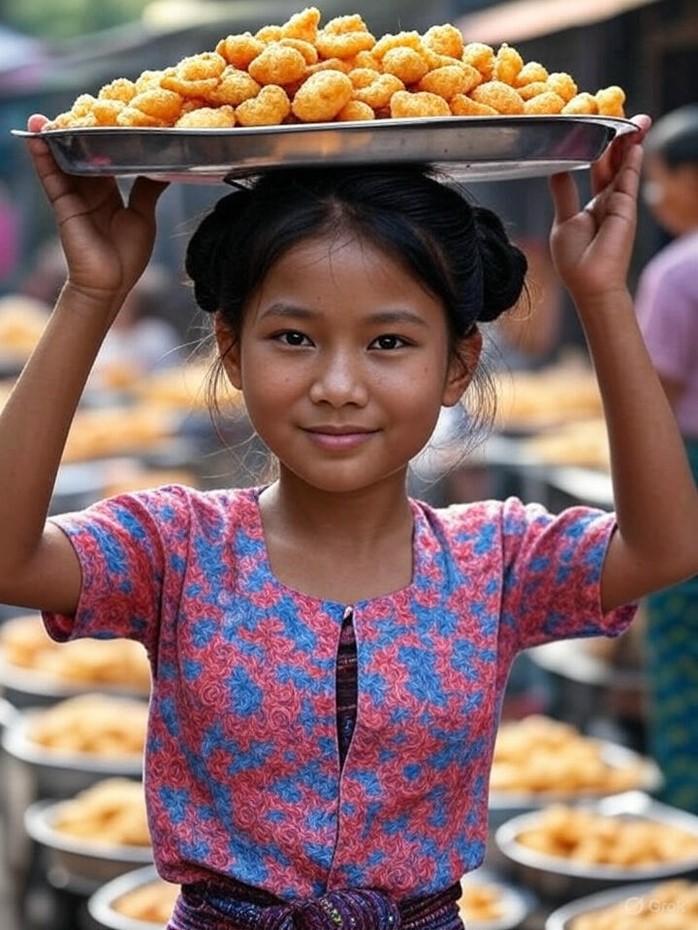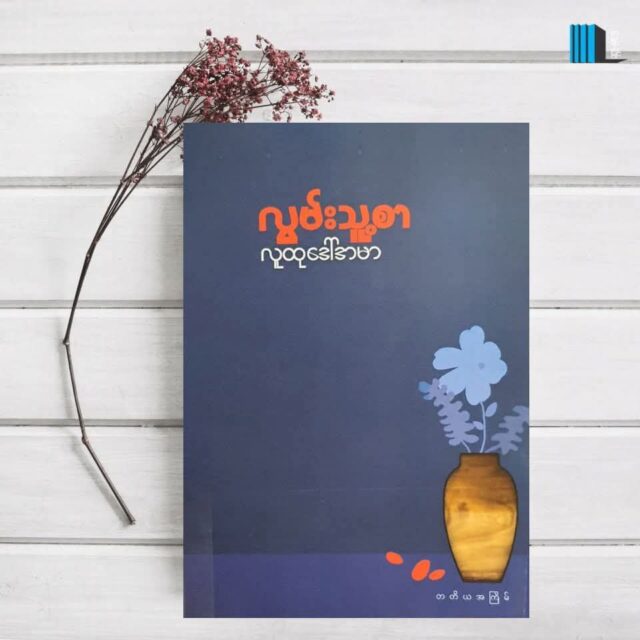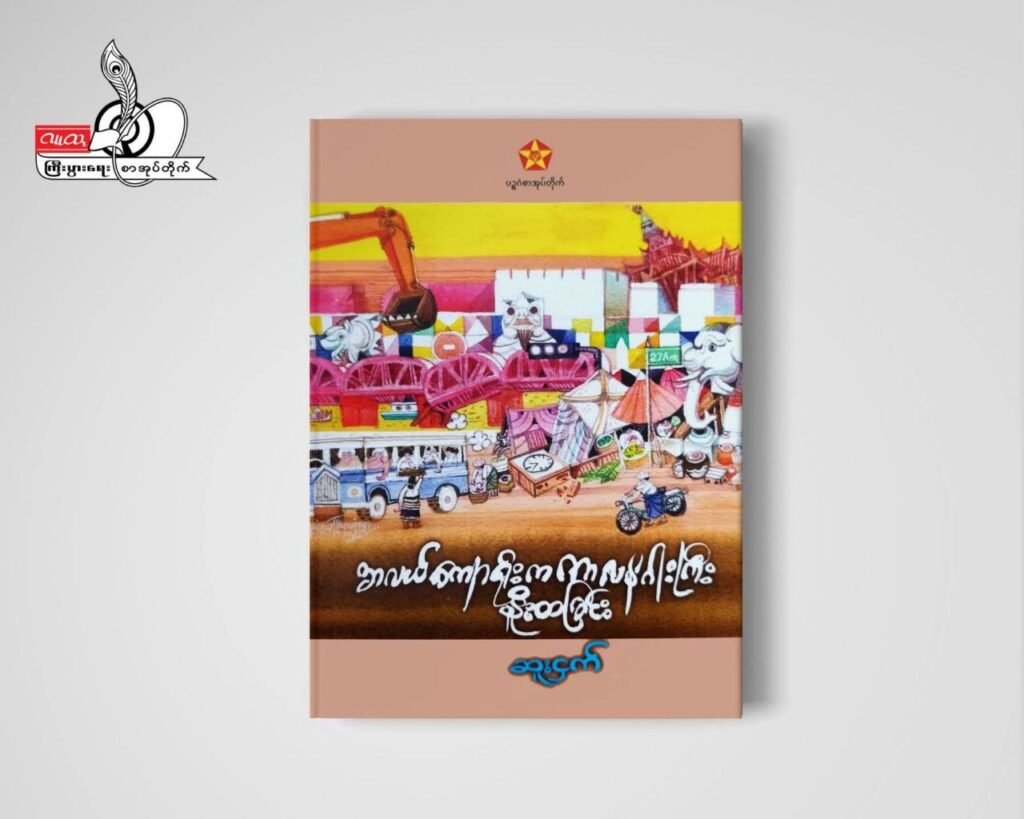A Simple Life in a Sizzling World
Posted_Date
Image

Body
In this vast, secular world where every person walks their own path, very few truly know what lies in the hearts of others. We pass each other in the street, sit side by side in tea shops, nod in politeness, and yet remain strangers in soul. Each person carries a bundle of quiet preferences, hidden joys, and untold stories. In my own quiet corner of life, one of my simplest pleasures is enjoying Myanmar fried snacks – golden, crisp, and comforting.
There is something profoundly satisfying about eating something fried, hot, and crackling fresh from the pan. I love gourd fritters, chickpeas wrapped in glutinous rice dough and deep-fried until golden, slices of bananas smeared with a touch of rice batter and dropped into sizzling oil, their edges curling into crispy swirls. These humble snacks, often accompanied by a light salad and a cup of hot green tea, are a small feast. Whether it’s morning or afternoon, sitting at home or on a small wooden stool near a roadside hut, this modest meal brings warmth to the day. It’s not only about filling the stomach – it is about savouring a familiar comfort, about a connection with the people who make them.
At just K100, these fried snacks are among the most affordable foods you can buy. But beyond price, they carry value in ways money cannot measure. A small piece can satisfy hunger, spark memory, and even bring people together. Compared to other snack varieties, fried snacks offer more for less – they are economical, filling, and full of flavour. That is perhaps why I came to befriend Mi Pauk, a hawker known in several wards, including mine. Every day, she carries trays of fried snacks on her head, walking tirelessly from street to street, lane to lane. She doesn’t advertise with loud voices or flashy signs – her quiet endurance and ever-consistent presence are more than enough.
Mi Pauk is a figure you can spot from afar. Her pace is steady, her expression calm. With each step, she balances a tray full of fried treats like a practised dancer. After finishing one tray, she returns to the hut and loads another. From sunrise to dusk, she moves like time itself – unhurried but unstoppable. Her path is long, and her feet must ache, but she never lets it show. Truly, who among us could walk from ward to ward, day after day, in the burning sun and pouring rain, without a word of complaint?
Though her work is tiring, her strength is admirable. She never grumbles. Her face, like the steady flame beneath a frying pan, remains unshaken. If you were to ask a glamorous model to trade places with Mi Pauk for just a day, she would not only refuse but might collapse from exhaustion. On the other hand, if Mi Pauk were asked to walk on a stage in high heels before a thousand flashing cameras, her shy soul might wither from embarrassment. Each person is shaped for their own journey, and each journey deserves its own respect.
Mi Pauk is not a scholar. She does not wear fancy clothes or carry a mobile phone. She does not boast wealth or fame. But she has a quiet dignity that cannot be bought. She walks with her head held high, not because of pride, but because she has nothing to be ashamed of. She is feeding her parents. She is supporting her family. And she is doing it with clean hands and a pure heart. In every street she passes, people know her not just as a hawker, but as a dutiful daughter and a symbol of perseverance. Her courage shines not in loud ways but in her ability to keep going with grace and kindness. In my eyes, Mi Pauk is an extraordinary girl – one of the unsung heroines of everyday life.
Lately, though, the snacks in her tray seem fewer. They look smaller and lighter. And Mi Pauk herself, already slim, seems to be shrinking too. Her frame is more fragile, her cheeks a little hollower. She walks as always, but something in her silhouette suggests a silent exhaustion. Regular customers, like me, have noticed. We feel a small ache of worry as we eat her snacks. The crunch is the same, but the taste carries concern.
No matter how few the snacks become, we keep buying them – not just because they’re delicious, but because we want to support Mi Pauk. It’s a quiet act of solidarity. We eat, not just to satisfy hunger, but to encourage her – to let her know that we see her. What we consume may be a piece of fried gourd or banana, but what we’re buying is a fragment of her effort, her daily labour, her fight to live with dignity.
Sometimes, as I watch her disappear around a street corner with the afternoon light behind her, I can’t help but think: Is her life like a piece of fried snack – dropped into the boiling oil of this harsh, secular world, sizzling and shrinking in the heat? Is the weight she carries more than physical? I wonder about her dreams, her fears, and whether she ever asks, in quiet moments, if it’s all worth it.
And then I realize – it’s not just Mi Pauk. We are all, in some way, being fried by the world. The flames of duty, the bubbling oil of hardship, the steam of endless expectations – they surround us all. Some of us puff up and crack under pressure. Others, like Mi Pauk, hold their shape, enduring silently, becoming golden through their trials. Life, for all of us, is a pan of hot oil. We dance, we sizzle, we shrink – but we also gain colour, texture, and taste.
So next time I hold a crispy fritter in my hand, I will not just taste the chickpeas or the banana. I will taste resilience. I will feel the story of Mi Pauk and many like her – people who live quietly, struggle daily and shine in their soft way. And I will remember that dignity doesn’t wear a uniform. It walks barefoot, with a tray on its head and love in its heart.
And perhaps, after all, the world is not such a secular place. For in these small human connections—in sharing fried snacks and silent respect – we find a kind of sacredness, don’t we?
Source: GNLM






